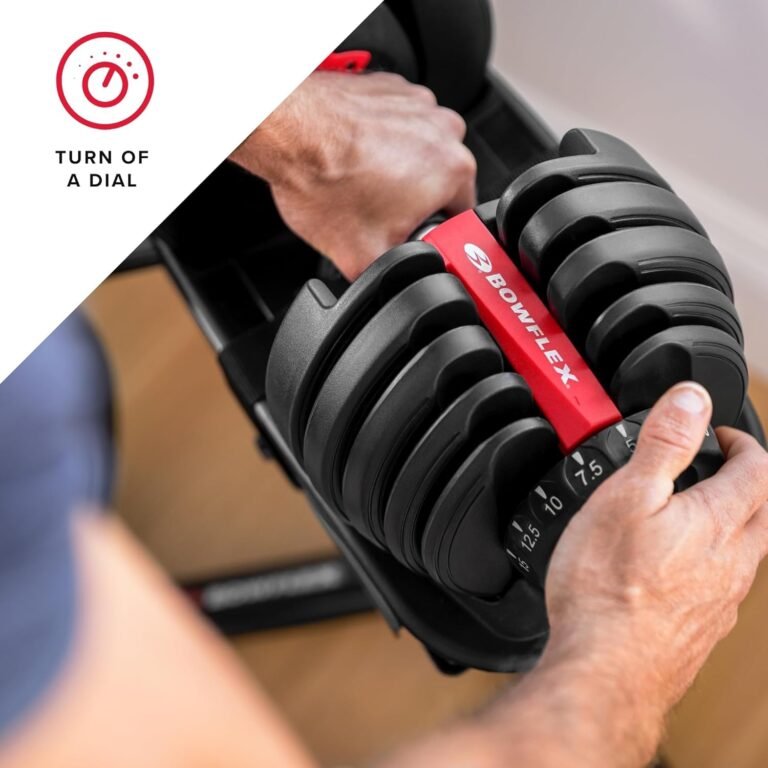Building a Balanced Workout Routine Without Equipment
Tired of the clunky, expensive gym equipment cluttering your living space? You can achieve a well-rounded workout routine without all the bells and whistles. By focusing on bodyweight exercises and creative workout strategies, you'll be surprised at the results you can achieve.
But how can you ensure you're hitting all the necessary muscle groups for a truly balanced routine? Stay tuned to discover the secrets to designing a comprehensive workout plan that doesn't rely on traditional gym equipment.
Key Takeaways
- Bodyweight exercises offer strength, flexibility, and convenience for a balanced routine.
- Incorporate mobility drills, core stability, and cardio for a well-rounded workout.
- Utilize push-up and plank variations for effective upper body strength and stability.
- Strengthen lower body with squats, lunges, and jump squats for endurance and power.
Benefits of Equipment-Free Workouts
Discover the numerous advantages of incorporating equipment-free workouts into your fitness routine. Bodyweight benefits offer a practical and effective way to build strength, flexibility, and endurance without the need for expensive equipment. By focusing on exercises that utilize your body weight, you can improve your overall fitness level while also enhancing your body awareness and control.
Engaging in minimalist exercise routines allows you to work out anywhere, anytime, making it convenient for even the busiest schedules. Whether you're at home, in a park, or traveling, you can still maintain your fitness goals with bodyweight exercises. These workouts aren't only cost-effective but also versatile, targeting multiple muscle groups simultaneously for a more efficient workout session.
Additionally, equipment-free workouts promote functional fitness by mimicking natural movements that translate into real-life activities. By incorporating bodyweight exercises into your routine, you can improve your balance, coordination, and stability, which are essential for daily tasks and overall well-being. So, embrace the simplicity and effectiveness of equipment-free workouts to elevate your fitness journey.
Key Components of a Balanced Routine
To create a balanced workout routine without equipment, focus on essential workout elements and functional movement patterns.
By incorporating these key components, you can target various muscle groups and improve overall strength and flexibility.
Essential Workout Elements
Incorporating key components into your workout routine is crucial for achieving balance and optimal results. To ensure a well-rounded routine, focus on the following essential workout elements:
- Mobility Drills: Start your workout with dynamic stretches and movements to increase blood flow, flexibility, and range of motion in your joints.
- Core Stability: Incorporate exercises that target your core muscles, such as planks and Russian twists, to improve overall stability, posture, and strength.
- Cardiovascular Exercise: Include activities like jumping jacks, high knees, or jogging in place to elevate your heart rate, burn calories, and improve endurance.
Functional Movement Patterns
By engaging in functional movement patterns, you can enhance your overall strength, agility, and coordination, leading to a more balanced and effective workout routine. Functional movement patterns involve exercises that mimic everyday movements, such as squatting, lunging, pushing, pulling, and rotating.
These movements not only target multiple muscle groups simultaneously but also improve your body's ability to perform daily activities with ease. Bodyweight exercises like push-ups, squats, planks, and burpees are excellent examples of functional movements that can be done without any equipment.
Incorporating these exercises into your routine won't only help you build muscle but also increase your flexibility, stability, and mobility. By focusing on functional movement patterns, you can achieve a well-rounded workout that benefits your overall fitness levels.
Upper Body Strength Exercises
Ready to boost your upper body strength without any equipment?
Push-up variations and plank exercises are fantastic choices to target your arms, chest, and core muscles.
Incorporate these moves into your routine for a challenging and effective upper body workout.
Push-Up Variations
Diversify your upper body workout with a range of push-up variations to strengthen different muscle groups effectively. Push-ups not only work your chest but also engage your shoulders, triceps, and core for a full-body workout.
Here are three push-up variations to spice up your routine:
- Diamond Push-Ups: Place your hands close together under your chest to target your triceps and inner chest while engaging your core for stability.
- Wide-Arm Push-Ups: Position your hands wider than shoulder-width apart to emphasize your chest muscles and shoulders, enhancing overall muscle engagement.
- Decline Push-Ups: Elevate your feet on a sturdy surface to increase the challenge on your shoulders, upper chest, and core, promoting greater core stability.
Get ready to elevate your strength and fitness with these effective push-up variations!
Plank Exercises
Enhance your upper body strength and stability with plank exercises that target multiple muscle groups simultaneously. Planks are fantastic bodyweight exercises that not only improve core stability but also engage your shoulders, arms, and back. By incorporating different variations, you can challenge yourself and prevent workout plateaus. Check out the table below for a variety of plank exercises to add to your routine:
| Plank Variation | Targeted Muscles |
|---|---|
| Standard Plank | Core |
| Side Plank | Obliques |
| Plank with Shoulder Taps | Shoulders |
| Plank with Leg Lifts | Glutes |
Include these plank exercises in your workout to build a stronger upper body and enhance overall body stability through effective core engagement.
Lower Body Strength Exercises
To build lower body strength effectively without equipment, focus on incorporating bodyweight exercises that target your leg muscles. Squats and lunges are two fantastic exercises that can help you achieve this goal. Here's a simple yet effective routine to strengthen your lower body:
- Bodyweight Squats: Stand with your feet hip-width apart, lower your body as if you're sitting back into a chair, then push through your heels to return to the starting position. Aim for 3 sets of 15-20 reps.
- Lunges: Take a big step forward with one leg, lowering your hips until both knees are bent at a 90-degree angle. Push back up to the starting position and repeat on the other leg. Do 3 sets of 12-15 reps per leg.
- Jump Squats: Add a plyometric element by performing a squat and exploding upward into a jump. Land softly and immediately go into the next squat to keep the intensity high. Aim for 3 sets of 10-15 reps.
Incorporating these exercises into your routine will help you develop strength and endurance in your lower body, without the need for any equipment.
Cardiovascular Workout Ideas
Boost your heart rate and burn calories with these effective cardiovascular workout ideas. Incorporating high-intensity intervals into your routine can help you elevate your heart rate quickly and improve your cardiovascular fitness. Try alternating between periods of maximum effort and short rest periods to keep your workouts challenging and engaging.
Dance cardio is another fun way to get your heart pumping while grooving to the music. You can follow along with online dance classes or simply let loose to your favorite tunes.
For a more intense cardio workout, consider adding stair sprints to your routine. Find a set of stairs and sprint to the top as fast as you can before walking back down to recover. This exercise isn't only great for your cardiovascular system but also helps to strengthen your lower body muscles.
Jump rope is another excellent cardiovascular exercise that requires minimal space and equipment. Just a few minutes of jumping rope can get your heart rate up and improve your coordination and agility. Incorporate these ideas into your workout regimen to keep your heart healthy and your body strong.
Incorporating Flexibility Training
Looking to improve your flexibility and enhance your overall workout performance? Flexibility training is a crucial component of any balanced workout routine as it helps prevent injuries, improves range of motion, and enhances overall athletic performance.
Here are some key aspects to consider when incorporating flexibility training into your fitness regimen:
- Stretching Techniques: Incorporate dynamic stretches like leg swings and arm circles before your workout to increase blood flow to your muscles and prepare them for exercise. After your workout, focus on static stretches to help relax and lengthen the muscles, reducing the risk of injury.
- Mobility Exercises: Include mobility exercises such as hip circles, shoulder rotations, and spinal twists to improve joint mobility and flexibility. These movements can help you move more freely and efficiently during your workouts, ultimately enhancing your overall performance.
- Injury Prevention: Consistently incorporating flexibility training into your routine can help prevent muscle imbalances, reduce the risk of strains or sprains, and promote better posture and alignment, ensuring you stay healthy and injury-free as you progress in your fitness journey.
Sample Weekly Workout Schedule
Enhance your fitness journey with a well-structured weekly workout schedule that targets different muscle groups and fitness components for optimal results.
To kickstart your week, consider beginning with HIIT routines and bodyweight exercises on Mondays and Wednesdays. These high-intensity workouts will boost your metabolism and burn calories effectively.
On Tuesdays and Thursdays, focus on core workouts to strengthen your abdominal muscles and improve stability.
Incorporating interval training on Fridays can help enhance your cardiovascular endurance while keeping your workouts engaging and challenging.
For the weekend, consider mixing in some light activities like walking, yoga, or stretching to allow your body to recover and relax.
Remember to listen to your body and adjust the intensity of your workouts as needed. By incorporating a variety of exercises throughout the week, you can ensure that you're targeting different muscle groups and aspects of fitness for a well-rounded routine.
Stay consistent, stay motivated, and watch your progress soar!
Tips for Maximizing Results
To optimize your workout routine and achieve maximum results, it's essential to implement strategic tips that can enhance your overall performance and progress. Here are some key strategies to help you maximize your workout routine:
- Prioritize Injury Prevention:
- Always warm up before exercising to reduce the risk of injury.
- Incorporate dynamic stretches and movements that mimic the exercises you'll be doing.
- Focus on maintaining proper form throughout your workout to protect your muscles and joints.
- Embrace Muscle Recovery:
- Allow your muscles time to recover and grow stronger by incorporating rest days into your routine.
- Consider activities like yoga or gentle stretching on rest days to promote blood flow and aid in muscle recovery.
- Adequate sleep and hydration are also crucial for effective recovery.
- Fuel Your Motivation and Consistency:
- Set clear, achievable goals to keep yourself motivated.
- Track your progress, celebrate small victories, and remind yourself of why you started.
- Consistency is key, so establish a workout schedule that fits your lifestyle and stick to it.
- Remember, progress takes time, so stay committed and trust the process.
Conclusion
Now that you have everything you need to create a killer workout routine without any equipment, all that's left is for you to get out there and crush it!
Remember, the sky's the limit when it comes to reaching your fitness goals.
So go ahead, sweat it out, push yourself to the limit, and watch those results roll in.
You've got this!







